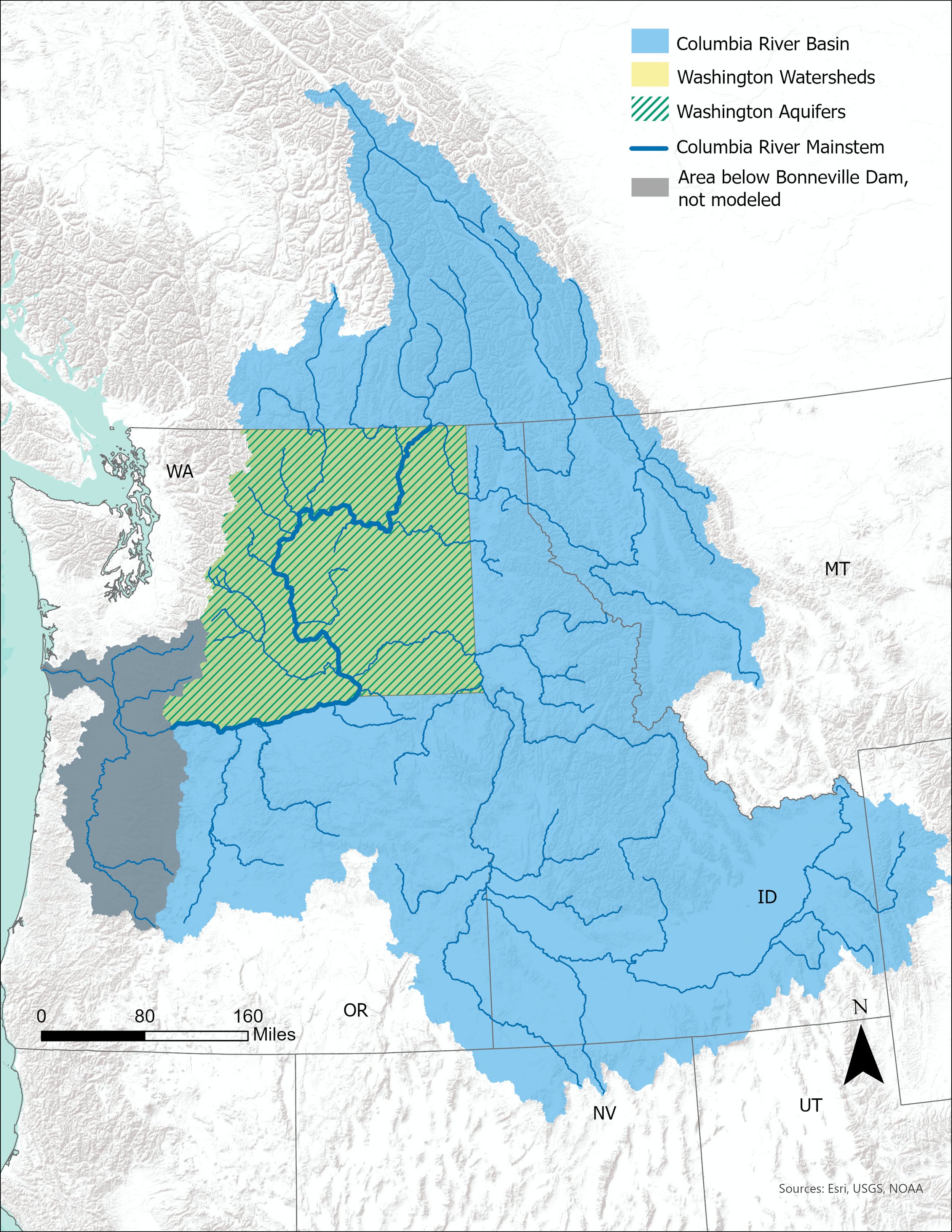In a recent post, the Department of Ecology celebrated a successful pilot project with the Auvil Fruit Company in Vantage, WA. The project created two water banks and helped the orchard reduce their water demand by 50%. Aspect partnered with Ecology on the water rights permitting as well as the bank development efforts, but it was an innovative strategy developed by Auvil that led to this water-saving achievement.
Shade cloth installed at Auvil Fruit Company.
The solution was to cover Auvil’s orchards with shade cloth, which has multiple water savings, worker safety, and fruit quality benefits. Aspect and Ecology used two high-tech weather stations to monitor water loss: one in the area of the orchard covered by shade cloth, and one in an adjacent, uncovered area. According to Ecology, the effectiveness of the shade cloth was striking:
We found that shade cloth improved a number of growing conditions. The coverage greatly increased relative humidity, drastically reduced wind speed, stabilized soil moisture, and cooled the air temperature. Combined, all these changes now help Auvil use much less water to produce fruit.
A weather station positioned beneath shade cloth at Auvil Fruit Company.
The shade cloth was so effective that Auvil was able to remove windbreaks made of water-hungry poplar trees. The study also led to other water-saving strategies, such as installing soil moisture monitors and replacing overhead sprinklers with a drip system that delivers water directly to the root zone of the trees. Both of these systems communicate with one another to regulate water in real time. Water savings from the project are being used to reduce drought risk on Auvil’s interruptible water rights, and for instream flow benefit for fish. Auvil continues to be a leader and innovator in irrigation practices and Aspect’s permitting and technical skillset is making the most of these water savings.
For more details, check out Ecology’s website!





















